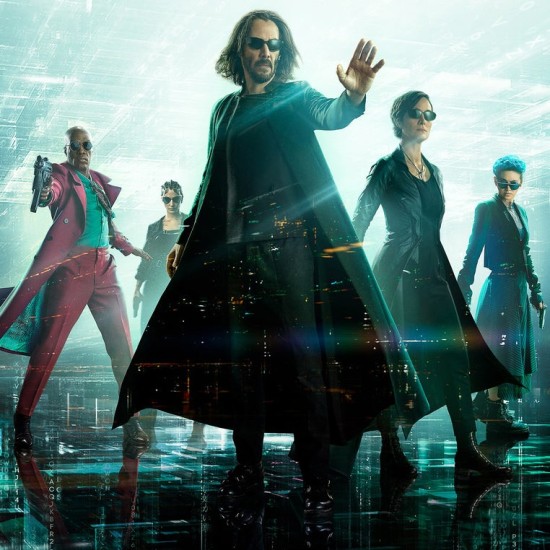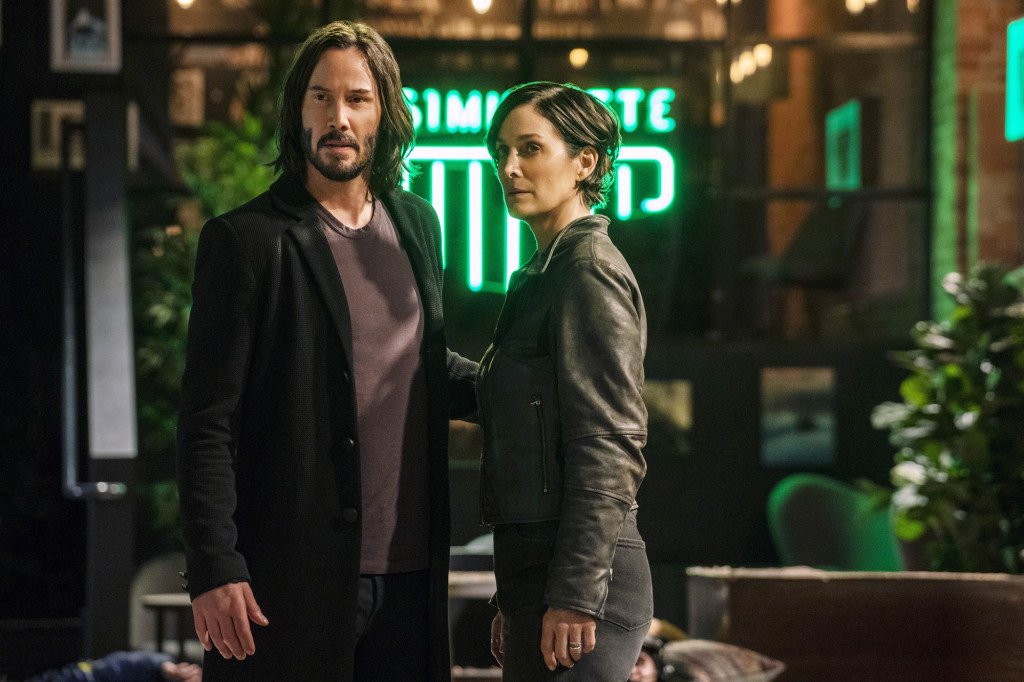Tonight I will be watching The Matrix Resurrections. Tomorrow, I will have the review for you. In the interim, I’ll be praying for a Christmas miracle. As much as I want this movie to be great, I can’t help but look at the Wachowskis’ body of work and see them as screenwriting warmongers. They place emphasis on the wrong things way too often, overcomplicating their narratives, carpet bombing the very fabric of their stories. So I know that hoping Lana Wachowski will learn from every mistake she’s ever made in one single leap is asking a lot. But boy would it be awesome if she pulled it off.
The irony is that The Matrix was built on the most basic classic storytelling template there is – The Hero’s Journey – sticking to it like a tadpole to water. That original film was a model of simplicity. Why did The Wachowskis move away from that in every other movie they made?
Of course, this was not the first time we’ve seen The Hero’s Journey launch a franchise. It was most famously done with Star Wars. Adhering to that simplest of storytelling formulas resulted in a 10 billion dollar empire.
So what is The Hero’s Journey? Why is it so powerful? And how come, despite its insanely positive track record, more screenwriters don’t use it? We’re going to answer those questions right now.
The Hero’s Journey is a storytelling template that breaks down a story (or, in this case, a screenplay) into a series of beats. We meet our hero living his life. He goes on an adventure. He defeats the monster and comes home. Along the way, he battles a flaw within himself that he eventually overcomes, which results in him becoming a better person (In The Hero’s Journey, this flaw is usually a lack of belief in one’s self).
More specifically, the hero is called on an adventure, usually by another character. The hero will refuse this call because it means change and the hero, like all humans, is uncomfortable with change. However, the hero eventually acquiesces, either on their own or due to changed circumstances (Luke Skywalker’s aunt and uncle being killed by stormtroopers, for example), and off he goes.
The hero meets a series of characters on his journey, each with a specific purpose. You have the mentor, the ally, the trickster, the guardian, and the shadow, to name a few. Some of these characters will help our hero. Some will hurt him.
Most of these characters engage our hero in the adventure portion of the story, what we know as the second act. The primary directive of this act be a series of obstacles thrown at your hero that test him, each trying to prevent him from achieving his objective.
The last stage of The Hero’s Journey is the only stage that doesn’t mesh with the Hollywood movie formula. This third act is known as “The Return,” and follows the hero back home after he’s defeated “the monster.” While there are some examples of this in modern cinema (Mad Max: Fury Road comes to mind), most modern movies defeat the monster and follow with two or three scenes totaling ten minutes tops.
There are 17 sub-sections of The Hero’s Journey and while I’m not going to go through all of them, I’m going to show you some of the major ones and how they line up with the original Matrix film. It should be noted that even Joseph Campbell recognized that every story is unique and that not all story beats will be applicable to every film.
The Call To Adventure – This occurs when Neo goes to the dance club and meets Trinity, who tempts him with finding out what the Matrix is.
Refusal of the Call – This happens when Morpheus is guiding Neo out on the ledge of his building and Neo says, “F%$$ this,” giving himself up to the agents.
The Crossing of the First Threshold – Campbell describes this stage as, “leaving the known limits of his world and venturing into an unknown and dangerous realm.” This occurs when Neo takes the red pill and travels through the mirror.
The Road of Trials – “The road of trials is a series of tests that the hero must undergo to begin the transformation.” The Wachowskis attack this one pretty literally. This is when we see Neo jump across the building, try to identify agents, and, of course, fight Morpheus in the dojo.
Woman as the Temptress – “In this step, the hero faces those temptations, often of a physical or pleasurable nature, that may lead him to abandon or stray from his quest, which does not necessarily have to be represented by a woman. A woman is a metaphor for the physical or material temptations of life since the hero-knight was often tempted by lust from his spiritual journey.” This occurs when Neo goes to the Oracle, who tempts him with being “The One,” only to find out that he is not. Of course later, we realize that she needed to tell him this for him to ultimately understand, through his own inner transformation, that he is The One.
Apotheosis – “This is the point of realization in which a greater understanding is achieved. Armed with this new knowledge and perception, the hero is resolved and ready for the more difficult part of the adventure.” This occurs when Trinity tells Neo she loves him, giving him the confidence in something greater than himself. He is now ready to save Morpheus.
Atonement with the Father/Abyss – “The hero must confront whatever holds the ultimate power in his life. In many myths and stories, this is the father or a father figure who has life and death power. But it doesn’t have to be the father. Just someone or something with incredible power.” Unlike Star Wars, there is no father storyline in The Matrix. You could argue that Morpheus is Neo’s father figure. But he’s not the antagonist Neo must battle, like Luke with Vader. Instead, Matrix reflects the broader view of this stage, “Someone or something with incredible power,” aka defeating Agent Smith and the other agents when he stops the oncoming bullets in mid-air.
The thing I’ve found with The Hero’s Journey, and any screenwriting template, for that matter, is that the further down into the template you go, the less effective staying true to the template becomes. That’s because every story is unique and has its own set of challenges that don’t fit perfectly into a template. To that end, you should try and hit the major beats (such as defeating the villain), then pick and choose which of the other beats best apply to your story.
However, you should follow the first half of any storytelling template as closely as possible. Those early beats tend to be universal. It’s only when your script gets into those latter stages that it becomes its own thing and, therefore, should be treated less strictly.
The main reason I wrote this was to remind people just how powerful The Hero’s Journey template is. It’s arguably the best bet for creating a universally loved story that will be celebrated for decades. Look at what the template has yielded. Star Wars. The Matrix. Lord of the Rings. The Wizard of Oz. Harry Potter. Does it get bigger than those movies??
I think the reason screenwriters don’t use it that much is for a couple of reasons. One, it’s more organic to the literary world. We can see that in Lord of the Rings, Wizard of Oz, and Harry Potter. When you try and do it in the movies, you tend to have to squish it together more. Which is why most of the films that use it expand out to multiple movies in order see the formula play all the way through. Also, any story that sends a character into a strange world or strange universe is going to cost a lot of money.
So you either have to be clever and come up with the world’s cheapest hero’s journey. Or be a well-known director with enough clout to demand 100 million bucks. It’s not out of the realm of possibility. The Wachowskis had only made one small film before The Matrix (Bound) and then shot The Matrix itself for 60 million bucks.
If you want to write the next billion dollar franchise, I don’t think there’s any question that the place to start is The Hero’s Journey. How can you argue with these results?
I will see everybody tomorrow for my most anticipated movie of the year! Matrix Ressurections! I can’t wait!



